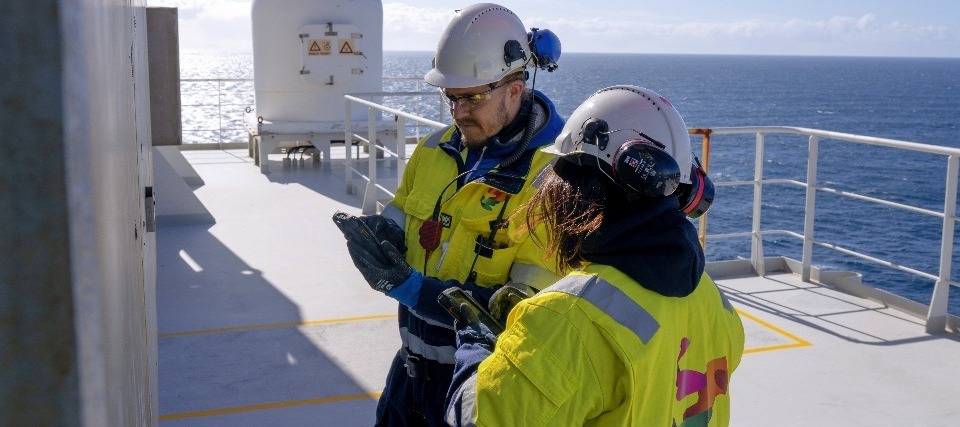IN SHORT
How data helped Aker BP and Framo revamp maintenance routines and reduce emissions
Framo used DataOps provided by Cognite, including Cognite Data Fusion, to access Aker BP’s industrial data. With API access to Cognite Data Fusion, Framo was able to inform their product development, leading to a more sustainable, performance-based business model.
The solution cut emissions and waste by reducing maintenance needs by 30% and shutdowns by 70%, and increased pump availability by 40%.
-
Reduced maintenance by 30% and shutdowns by 70%
-
Increased pump availability by 40%
-
Cut waste and emissions by reducing production and transport of new parts
CHALLENGE
Adequate product and equipment maintenance
Traditional industrial infrastructure has limited supplier relationships to a transactional format. The results include static reporting, uninformed maintenance schedules, and a waste of money and resources on both sides.
Adequate product and equipment maintenance is critical to reduce the need for new products and associated resources, limit waste, and cut climate gas emissions. However, too frequent or infrequent maintenance can negatively impact the quality and lifetime of equipment. Still, the traditional operator-supplier relationship often relies on a business model that does not encourage real-time and condition-based maintenance.
Data is the key to solving these issues, but it can be difficult to access. For example, Framo, a global OEM providing pumps to the marine industry, was historically unable to access or leverage operational data from their customers in the oil and gas industry. Data was only been made available for sporadic projects linked to specific, isolated events, such as equipment failure. If Framo were to have access to their clients’ industrial data, past and real-time, they would gain the knowledge needed to improve and innovate on their existing products and services, and reduce waste.
SOLUTION
A data-driven, performance-based business model boosting efficiency and reducing waste
Working closely with Aker BP, Framo used Cognite Data Fusion to access Aker BP’s industrial data. API access to Cognite Data Fusion, enabled a shift to a new performance-based contract, and provided Framo with valuable information to improve their products. Integrating with Aker BP’s ERM system, Framo could set work orders and enable a feedback loop with design and engineering. From there, Framo was able to develop and launch more effective, service-based models informed by real-time data.
Access to real-time operational data also allowed Framo to build a new and more sustainable business model. The operational history of the pumps, combined with live data, helps Aker BP and Framo monitor product performance and predict maintenance needs. Data from the pumps can be evaluated in real-time regardless of installation location, and the information provided can be accessed securely.
By monitoring the equipment remotely, the condition can be continuously assessed by specialists and necessary maintenance can be planned accordingly. In this way, the assets can be used as effectively as possible with minimal downtime by limiting unnecessary scheduled maintenance. This allows asset operators to focus on increasing the production output. Condition-based maintenance also increases the flexibility of the service, as the areas requiring maintenance are determined ahead of intervention, improving planning and execution.
IMPACT
With instant access to real-time data, users can experiment with advanced analytics and machine learning to deliver improved performance and develop new products.
This new way of working lays a foundation for redefined business models, allowing OEMs to move from selling equipment to service-based offerings.
The data-driven approach to pump performance and maintenance reduced maintenance needs by 30% and shutdowns by 70%, and increased pump availability by 40%.
Reducing the need for maintenance also benefits the environment, for example by reducing climate gas emissions and resources associated with producing new parts, transporting them to an installation, and handling waste.


 Check the
documentation
Check the
documentation Ask the
Community
Ask the
Community Take a look
at
Academy
Take a look
at
Academy Cognite
Status
Page
Cognite
Status
Page Contact
Cognite Support
Contact
Cognite Support


